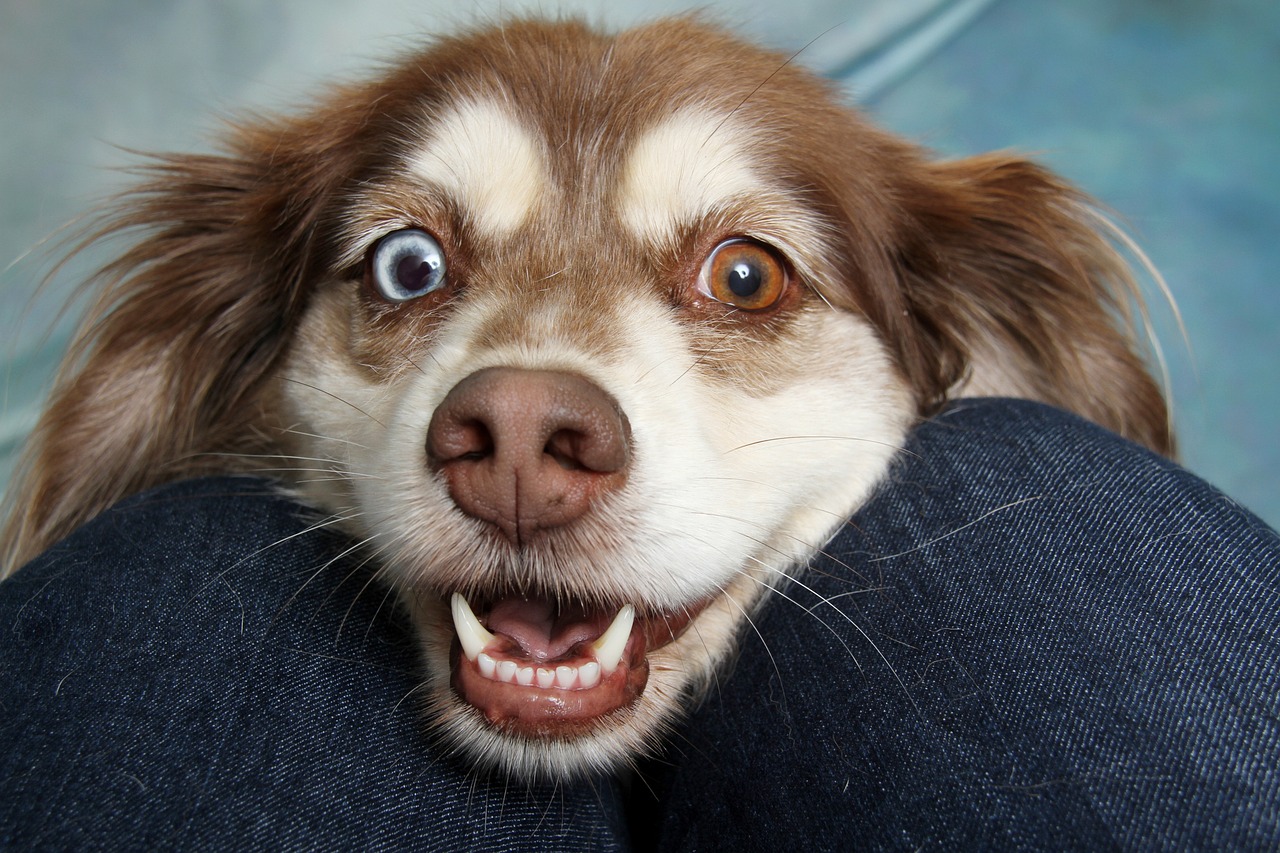Introduction
As pet parents, our dogs rely on us to keep them safe, healthy, and happy. One of the most critical aspects of their health is their vision, which is often taken for granted until something goes wrong. When your dog’s eyes start to appear cloudy, it could be an early warning sign of a serious condition known as glaucoma. Understanding glaucoma in dogs, its symptoms, and the importance of timely veterinary intervention can make all the difference in preserving your furry friend’s eyesight.
In this comprehensive guide, we’ll explore what glaucoma is, its impact on dogs, the importance of early detection, and the steps you need to take if you notice any signs of this condition in your pet.
What is Glaucoma?
Glaucoma is an eye disease characterized by increased pressure within the eye, known as intraocular pressure (IOP). This condition occurs when the fluid inside the eye, called aqueous humor, fails to drain properly. The accumulation of this fluid leads to increased pressure, which can damage the optic nerve and ultimately result in vision loss or blindness if left untreated.
While glaucoma is often associated with humans, it is also a common condition in dogs. Unfortunately, it can be challenging to detect in its early stages, making it a silent threat to your dog’s vision.
Types of Glaucoma in Dogs
There are two primary types of glaucoma that can affect dogs:
- Primary Glaucoma: This type is often inherited and is caused by a genetic predisposition. It usually occurs in both eyes but may start in one eye before affecting the other. Breeds such as Cocker Spaniels, Basset Hounds, and Beagles are particularly susceptible to primary glaucoma.
- Secondary Glaucoma: Secondary glaucoma occurs as a result of another eye condition or injury. This can include inflammation, cataracts, tumors, or trauma to the eye. Secondary glaucoma is not breed-specific and can affect any dog.
Understanding the type of glaucoma your dog has is essential for determining the appropriate treatment and managing the condition effectively.
Symptoms of Glaucoma in Dogs
Glaucoma in dogs can be difficult to detect early on, as the symptoms may be subtle or easily mistaken for other eye conditions. However, being aware of the signs and symptoms can help you identify the problem before it progresses to a more severe stage.
Common symptoms of glaucoma in dogs include:
- Cloudy Eyes: One of the most noticeable signs of glaucoma is a cloudy or bluish tint to the eye. This occurs due to the increased pressure within the eye, which affects the cornea’s clarity.
- Redness: The affected eye may appear red or bloodshot, indicating inflammation or irritation.
- Dilated Pupils: The pupils may become dilated and less responsive to light. This can lead to sensitivity to bright lights.
- Squinting or Blinking: Dogs with glaucoma may squint or blink excessively, often due to discomfort or pain.
- Tearing: Excessive tearing or discharge from the eye is another common symptom.
- Vision Loss: As glaucoma progresses, it can lead to partial or complete vision loss in the affected eye.
- Behavioral Changes: Dogs with glaucoma may become more withdrawn, less active, or display signs of pain, such as pawing at their eyes or avoiding contact.
If you notice any of these symptoms in your dog, it is crucial to seek veterinary care immediately. Early detection and treatment are key to preserving your dog’s vision and preventing further complications.
Causes of Glaucoma in Dogs
The underlying causes of glaucoma in dogs can vary depending on whether the condition is primary or secondary.
- Genetic Predisposition: In cases of primary glaucoma, genetics play a significant role. Certain breeds are more prone to developing glaucoma due to inherited anatomical abnormalities that affect the drainage of aqueous humor from the eye.
- Eye Infections: Chronic or severe eye infections can lead to inflammation that obstructs the normal drainage of fluid, increasing intraocular pressure.
- Cataracts: Cataracts can interfere with the flow of aqueous humor, leading to increased pressure within the eye.
- Eye Injuries: Trauma to the eye, such as a blow or puncture, can disrupt the normal drainage of fluid, resulting in secondary glaucoma.
- Tumors: Tumors in or around the eye can block the drainage pathways, causing fluid buildup and increased pressure.
- Inflammation: Conditions such as uveitis, which cause inflammation of the eye’s internal structures, can also lead to secondary glaucoma.
Understanding the cause of your dog’s glaucoma is essential for determining the best course of treatment and preventing further damage.
Diagnosing Glaucoma in Dogs
Diagnosing glaucoma in dogs requires a thorough examination by a veterinarian, often a veterinary ophthalmologist. The diagnostic process typically involves several steps:
- Physical Examination: The vet will perform a general physical examination to assess your dog’s overall health and look for any signs of discomfort or pain in the eyes.
- Ophthalmoscopy: This procedure involves using an ophthalmoscope to examine the interior structures of the eye, including the optic nerve and retina. The vet will look for signs of damage or abnormalities.
- Tonometry: Tonometry is a critical test for measuring the intraocular pressure in your dog’s eye. A device called a tonometer is used to measure the pressure, which helps confirm the presence of glaucoma.
- Gonioscopy: This test allows the vet to examine the drainage angle of the eye to determine whether there is a blockage that is preventing proper fluid drainage.
- Ultrasound: In some cases, an ultrasound may be used to visualize the structures within the eye and identify any underlying causes, such as tumors or inflammation.
Prompt and accurate diagnosis is essential for determining the appropriate treatment and managing glaucoma effectively.
Treatment Options for Glaucoma in Dogs
The treatment of glaucoma in dogs aims to reduce intraocular pressure, manage pain, and preserve vision as much as possible. The specific treatment approach will depend on the severity of the condition, the underlying cause, and whether one or both eyes are affected. Common treatment options include:
- Medications: Various medications can help lower intraocular pressure, reduce inflammation, and alleviate pain. These may include eye drops, oral medications, or a combination of both. Medications can be effective in the early stages of glaucoma but may need to be used long-term.
- Surgery: In more advanced cases, surgical intervention may be necessary. There are several surgical options available, depending on the specific needs of your dog:
- Laser Cyclophotocoagulation: This procedure uses a laser to destroy part of the ciliary body, which produces aqueous humor, thereby reducing fluid production and pressure.
- Cyclocryotherapy: This technique involves freezing part of the ciliary body to reduce fluid production.
- Filtering Surgery: This surgery creates a new drainage pathway for the aqueous humor to relieve pressure.
- Enucleation: In severe cases where vision cannot be preserved and the eye is causing significant pain, the eye may be surgically removed (enucleation). This is a last-resort option but can greatly improve the dog’s quality of life.
- Artificial Drainage Devices: Some surgical procedures involve the implantation of devices that help facilitate the drainage of fluid from the eye to control intraocular pressure.
- Regular Monitoring: Dogs with glaucoma require ongoing monitoring to manage the condition effectively. Regular visits to the veterinarian, including follow-up examinations and pressure measurements, are crucial to ensure the treatment is working and to make any necessary adjustments.
The goal of treatment is to control intraocular pressure and prevent further vision loss, but in some cases, vision may not be fully restored. However, with appropriate care, many dogs can continue to live happy and fulfilling lives even with vision impairment.
Preventing Glaucoma in Dogs
While not all cases of glaucoma can be prevented, there are steps you can take to reduce the risk and protect your dog’s vision:
- Regular Eye Examinations: Routine eye exams are essential, especially for breeds that are predisposed to glaucoma. Early detection of any changes in the eye can help prevent the progression of the disease.
- Monitor for Signs: Be vigilant for any signs of eye problems, such as cloudiness, redness, squinting, or discharge. Early intervention can make a significant difference in the outcome.
- Genetic Testing: If you have a breed that is prone to glaucoma, consider genetic testing before breeding. This can help reduce the incidence of the disease in future generations.
- Protect Against Eye Injuries: Prevent trauma to your dog’s eyes by keeping them safe from hazards that could cause injury. This includes being cautious during playtime and avoiding environments where eye injuries are more likely to occur.
- Manage Underlying Conditions: If your dog has a condition that increases the risk of secondary glaucoma, such as cataracts or uveitis, work closely with your veterinarian to manage the condition and monitor the eyes regularly.
While it may not be possible to prevent glaucoma entirely, these steps can help reduce the risk and ensure that any issues are addressed promptly.
Living with a Dog with Glaucoma
Caring for a dog with glaucoma requires ongoing attention and commitment, but it is entirely manageable with the right approach. Here are some tips for living with and supporting a dog with glaucoma:
- Medication Adherence: Ensure that your dog receives their prescribed medications consistently and as directed. This is crucial for managing intraocular pressure and preventing further damage.
- Regular Vet Visits: Maintain a schedule of regular veterinary check-ups to monitor your dog’s condition and adjust treatment as needed.
- Adapt Your Home: If your dog experiences vision loss, make adjustments to your home to help them navigate safely. This may include keeping furniture in consistent locations, using tactile markers, and providing a safe, enclosed outdoor area.
- Provide Comfort: Dogs with glaucoma may experience discomfort, especially if they are dealing with pressure fluctuations. Offer a comfortable and quiet space for your dog to rest, and be attentive to their needs.
- Emotional Support: Vision loss can be distressing for dogs, so providing emotional support and reassurance is important. Spend quality time with your dog, engage in gentle play, and maintain routines to help them feel secure.
- Consider a Veterinary Ophthalmologist: If your dog’s condition is complex or requires specialized care, consider consulting a veterinary ophthalmologist who has expertise in managing glaucoma and other eye disorders.
Conclusion
Glaucoma is a serious and potentially blinding condition in dogs that requires prompt attention and ongoing management. By recognizing the signs early, seeking veterinary care, and following a comprehensive treatment plan, you can help preserve your dog’s vision and quality of life.
Cloudy eyes are often the first visible sign that something is wrong, and they should never be ignored. If you notice any changes in your dog’s eyes, don’t hesitate to visit your veterinarian. Early intervention is key to preventing the devastating effects of glaucoma and ensuring that your beloved pet can continue to see the world clearly for years to come.











Leave a Reply